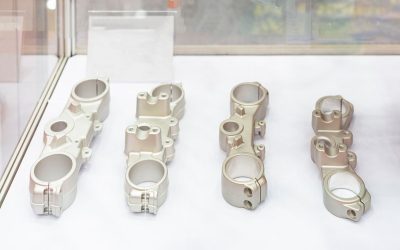Gravity Die Casting is a permanent molding process. This process is done by pouring the molten metal into the mold of the pocket container. No external force is applied. This works in the same way as sand casting, but it is possible to control the filling by tilting the mold. There are several advantages to using gravity casting on top of sand casting S. These advantages are better mechanical properties and better surfaces.
The type of components manufactured with this printing method is ideal for small and medium enterprises. The weighing is usually about 20 kg and is made of zinc-based alloys. This type of mold allows to produce a higher volume of precision components and is also a highly cost-effective method for semi-high volumes with minimal finishing operations, especially when compared to sand printing. The equipment used to make this type of mold is called gravity die tool and can produce this mold for several years. It shouldn’t require an update during this time. With the use of multiple tools, the production rate can increase dramatically and the components can also be heated to enhance or adjust the characteristics.

This is a very special field and, if you need it, I suggest you look around, know the companies that offer this service, search the Internet and find the one that suits you.
What You Need To Understand About Gravity Die Casting
With sand casting, mold is broken after each printing operation, but with a process known as gravity die casting, the mold also called “Matrix, ” is made of metal and can be used many times. This means that the matrix is much more expensive to produce than a disposable mold. The intermediate technique uses semi-permanent mold made of plaster or flame clay, which can be used repeatedly for a limited number of molded parts. With gravity casting, the most commonly used material for mold making is cast iron, steel, and heat-resistant iron blends. For some specific applications, other materials are used for mold making and may include aluminum. Copper or graphite metal matrix can produce a smooth mold with clean surfaces and very high dimensional accuracy. These prints require little or no final machining or other finishing treatments. The life of the metal matrix may vary depending on the number of molded parts that can be produced, and this depends on certain factors, such as casting material, thermal shock resistance of the matrix material, the temperature at which it is poured and the method Casting is used.
A lot of detail should be considered when designing patterns from which matrices are created. For example, the pouring tract system and riser tube should be taken into account so that the mold wall allows cooling action on the liquid metal, thus freezing faster than during the printing process. Also, the mold should have a conduit in the seal and air holes to allow the hot metal-air out of the inside of the mold. The matrix must also be constructed so as not to limit the contractions occurring when the metal cools. Extraction can cause difficulty in designing the core-forming mold. Typically, the nucleus is made of special steel or alloy, and sometimes the sand or compressive nuclei are used.
To prevent metal smelting sticking to the mold, you can apply the inner layer of lime, clay or ash bone to the matrix with a glass of water as a binder. This mixture can be applied to the matrix by spraying, brushing or dipping.
With simple castings, molten metal can be poured from above. It should be designed to allow the molten metal to flow rapidly without turbulence to all die parts. For metals with low melting, the matrix is sometimes heated to prevent premature freezing, and for metals with high melting may be necessary to cool the matrix artificially after each smelting operation.
Moving or tilting the die slowly during casting can reduce turbulence and allow metals to flow more easily, especially when heavy castings are produced. For awkward prints, vacuum space can be applied to facilitate mold filling. Slip Casting is a technique used for the manufacture of ornamental or hollow castings: The molten metal is poured into the matrix and when a solid shell with a sufficiently formed thickness, the remaining fluid is poured.
Although die casting is cheaper than sand casting, tools are more expensive and the optimal number of castings must be produced for the process to be profitable.
If you want to know information about sand casting China process, contact us. if you want to buy gravity die casting from China, send us your part design, we will quote you a price.



0 Comments